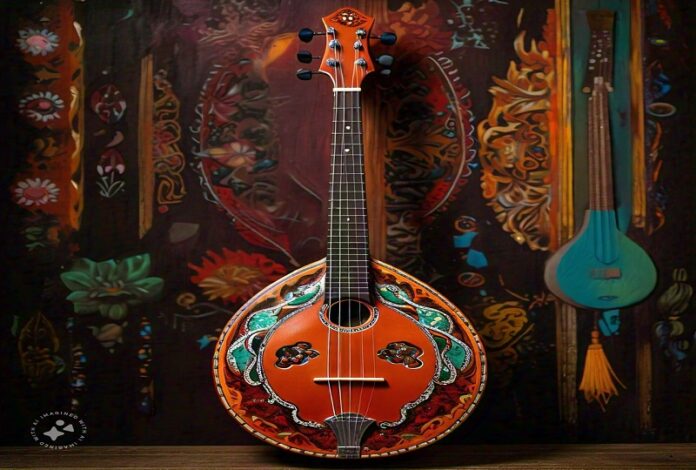The banjola is something beyond an instrument; it encapsulates the rich cultural woven artwork of the Indian subcontinent, especially in India and Pakistan. This exceptional stringed instrument has captured the hearts of many through its distinctive sound and traditional roots.
The banjola is a society music instrument that resembles a banjo, consolidating components of string instruments with rich cultural importance. Normally, it includes a round body, which adds to its resounding sound, and a long neck, considering an extensive variety of melodic articulation. The instrument is intended for flexibility, accommodating different playing styles and techniques.
The banjola assumes an imperative part in the people music traditions of India and Pakistan. It is in many cases highlighted in nearby celebrations, storytelling, and cultural exhibitions, representing local area and shared legacy. Districts, for example, Punjab and Gujarat are especially known for their energetic banjola music, where the instrument is necessary to traditional celebrations and social occasions.
Playing the banjola includes two essential techniques: culling the strings with fingers or utilizing a plectrum. Performers frequently pick their technique in light of individual inclination and the ideal sound. Normal techniques incorporate playing, culling individual notes, and making musical examples that accompany vocals and different instruments.
The banjola is common in different classifications of people music, including traditional society melodies, reflection music, and territorial moves. It frequently goes with exhibitions in cultural celebrations, upgrading the celebratory climate. Outstanding models incorporate melodies that describe stories of affection, grit, and fables, exhibiting the banjola’s capacity to bring out profound emotions.
Lately, the banjola has tracked down its direction into present day music types, impacting styles like combination and world music. Artists are experimenting with the instrument, mixing traditional sounds with contemporary components, consequently expanding its allure. The banjola’s novel tone adds profundity to different music kinds, making it a pursued instrument in the present different music scene.
A few performers have made critical contributions to the notoriety of the banjola. Outstanding players have showcased their gifts in live exhibitions and accounts, bringing the instrument to new crowds. Their creative approaches to playing the banjola have ignited interest in its exceptional sound and cultural roots, guaranteeing that the instrument stays significant in the advanced music landscape.
The banjola isn’t simply an instrument; it is a vessel of cultural legacy, safeguarding the tales and traditions of ages. As performers proceed to investigate and adjust its sound, the future of the banjola looks splendid. Its importance in maintaining cultural character and fostering imaginative articulation is obvious, making it a cherished component of both traditional and contemporary music.
By understanding the banjola’s rich history and developing job in music, we can see the value in its importance in the continuous account of people traditions and its effect on present day creativity.
RELATED ARTICLES




